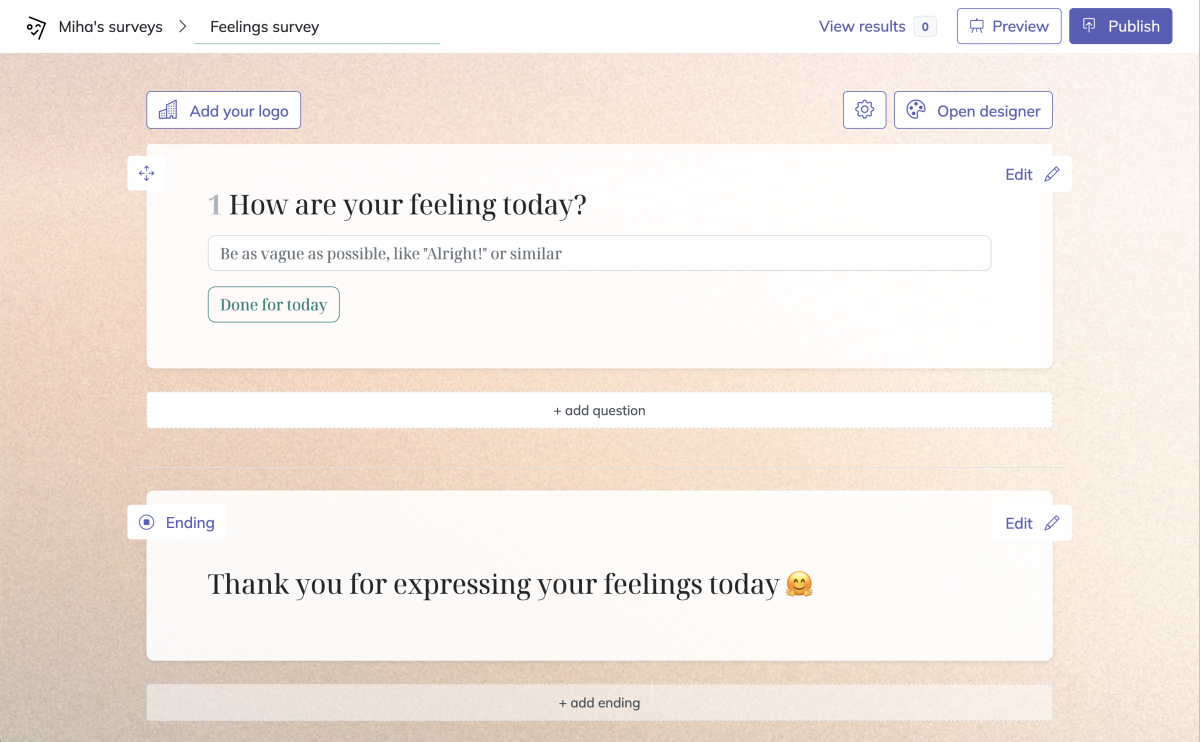Table of Contents
Ah, the Likert scale survey, the bread and butter of opinion measurement. It's like that one friend who's always there to lend a hand, but sometimes, you just can't help but wonder if they're holding you back. While Likert scale questions have become a staple in the world of surveys, they aren't without their fair share of quirks and drawbacks. Let's take a lighthearted stroll through the land of Likert scale surveys, where things can get a bit... wonky.
1. The Curse of the Neutral Zone
Imagine you're Goldilocks, trying to find the perfect bowl of porridge. You come across a five-point scale of porridge temperatures, ranging from "too cold" to "too hot." You choose "just right," expecting a heavenly dining experience. But alas, your taste buds are met with disappointment.
That's the danger of the neutral zone in Likert scale surveys - it's a safety net for indecisive respondents, who may fall into the trap of selecting the middle ground when they don't feel strongly about an issue. This can lead to wishy-washy data that's about as useful as a chocolate teapot.
2. The Great Even-Odd Debate
To even or not to even, that is the question. With an even number of options, you force respondents to pick a side, like choosing between Team Edward and Team Jacob. But with an odd number, you give them the option to sit on the fence, munching popcorn and watching the drama unfold.
Both options have their pros and cons, but the debate rages on like a never-ending game of tug-of-war. Do you want decisive data, or do you want to give respondents the chance to be Switzerland? The struggle is real.
3. The "Strongly Agree" Bias
We've all been there - you're taking a survey, and you find yourself nodding along with every statement, clicking "strongly agree" like it's going out of style. It's called acquiescence bias, and it's the sneaky little gremlin that can skew your data faster than you can say "confirmation bias."
Respondents may be more inclined to agree with statements, either because they want to please the survey gods or because they're just too darn agreeable. This can lead to a lopsided dataset that's as reliable as a weather forecast in April.
4. The One-Size-Fits-All Dilemma
Like trying to fit a square peg into a round hole, Likert scales can sometimes feel limiting. They force respondents into predetermined boxes, leaving little room for nuance and making them question their life choices (okay, maybe not that last part).

The rigid structure can prevent respondents from expressing their true feelings, like asking a poet to express their emotions using only emojis. While they may get the point across, something inevitably gets lost in translation.
5. The Lost Art of Interpretation
Finally, we arrive at the pièce de résistance of Likert scale drawbacks: interpretation. With great data comes great responsibility, and interpreting Likert scale results can be as tricky as deciphering a teenager's text messages.
Are the differences between "agree" and "strongly agree" really that significant? How do you compare the responses of someone who consistently chose "neutral" with someone who was all over the map? It's enough to make your head spin like a top on a merry-go-round.
So there you have it, folks - the dark side of Likert scale surveys. While they may be a convenient and popular tool, it's important to remember that they're not without their flaws. Like a beloved yet slightly annoying sidekick, they're here to stay, but sometimes, you just have to take them with a grain of salt.

